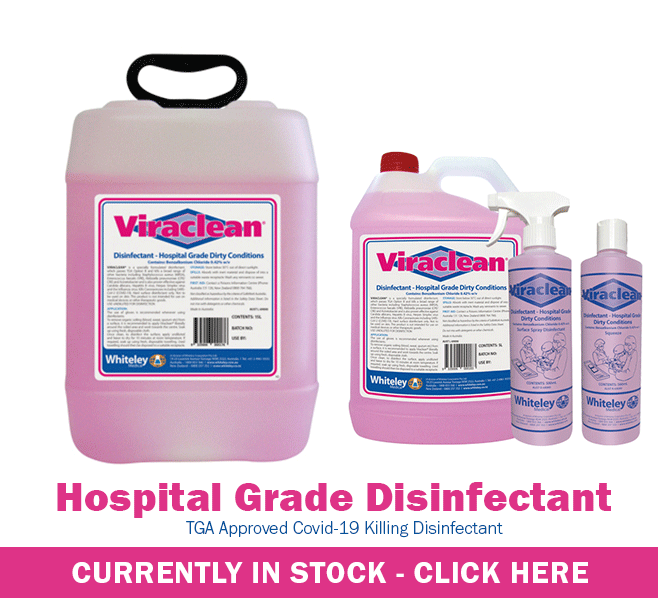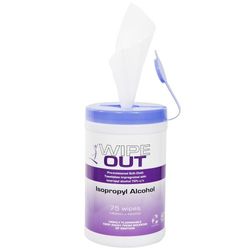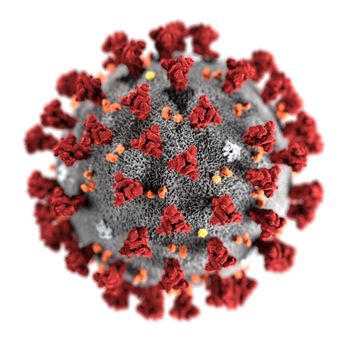Cleaning vs Sanitising vs Disinfection
CLEANING VS SANITISING VS DISINFECTION
At a time of Coronavirus COVID-19, at Rapid Clean Newcastle we guide customers to improve cleaning standards to protect staff, customers, families, and homes. So we need to understand the difference between cleaning, sanitizing, and disinfecting surfaces to choose the right chemicals and processes. At the highest disinfection level, very few chemicals are TGA approved to do more than disinfect, and actually kill the virus.
The highest standard is disinfection, then sanitizing, then just cleaning.
Cleaning surfaces is a physical action to remove dirt and bacteria, and it can also be to kill problem bacteria or viruses. If dirt is not removed, sanitizing or disinfecting chemicals may not be able to treat surfaces covered with dirt. That applies to body skin as well as contact surfaces. It is why handwashing is the primary cleansing process that must be thoroughly done before sanitizing. Its why scrubbers that agitate and suck up dirt are much more effective than mops that swish dirt around. Surface cleaning standards control the risk of transfer of pathogens when contact may occur with those surfaces.
Applying sanitizers and disinfectants escalates the cost of cleaning. That’s because more concentrated chemicals are required, and often longer labour processes. Some chemicals clean at 100:1, but need 10:1 to disinfect, so 10x the cost. Disinfection also commonly demands minimum contact time required, or it's just wasted application of chemical wiped off too quickly. Very few disinfectant chemicals have TGA approved kill claims against COVID-19. Good TGA approved chemicals are Viraclean by Whiteley, and Oxivir by Diversey are examples. 
So at the most basic level, Cleaning low-risk surfaces, such as floors and windows, just removes dirt, debris, and dust. There is no attempt to kill bacteria or pathogens. It is suitable where the likelihood of pathogen transfer from the surface is low – generally, we don’t touch floors, our shoes do. So unless you are at a school or gym where people sit on floors, disinfection is not usually required. During the cleaning process, those pathogens might be removed but would adhere to cleaning tools.
At the next level up, Sanitizing reduces bacteria, viruses and fungi, by a factor of 99.9%. Sanitising can be applied to food contact surfaces, which achieves compliance with food industry regulations. It can apply in childcare on baby change tables, play areas. Sanitizing offers no confidence of killing the flu or other viruses commonly found on surfaces. Quaternary compounds are usually the source of action, in varying quantities. It certainly improves the safety to users compared with just cleaning.
At the highest level, Disinfection standards will kill specific organisms. Disinfection demands 99.9999% of organisms are killed, compared with 99.9% in sanitizing. We can put that into real numbers. If we start with 1 million organisms on a surface then a disinfectant must kill 100 percent of them; zero left. A sanitizer only reduces the number of organisms down to 1,000 and does nothing about viruses and fungus.
The disinfectant chemical manufacturers commonly specify on labels and in Safety Data Sheets (SDS), and also state the concentrate ratio and time required. Disinfection is appropriate for frequently touched surfaces and surfaces likely to harbor pathogens. TGA standards for disinfection in hospital environments cover specific viruses like Staff, Ecoli, viruses like COVID-19, and regulate how chemical concentrates can be bought, decanted, used.
There is an economic impact for higher cleaning standards. Businesses, schools, shopping centres and apartment blocks with common areas, that raise their cleaning standards to disinfection levels, need to accept their cleaners will use chemicals that are more concentrated, more expensive, and more time consuming to diligently apply, than basic cleaning agents. They need to appreciate that a surface disinfected now, only stays disinfected until the next virus lands on it, requiring cleaning again. So preventing the spread of a problem is as important as dealing with a problem surface.
In all cases, cleaners must avoid cross-contamination of surfaces where bacteria and viruses are moved from one surface to another. This is common where dusters and floor shaggy mops are used in multiple rooms, mops are not disinfected from room to room, gloves are not changed from room to room.
Removal of COVID-19 virus
Removal of germs such as the virus that causes COVID-19 requires thorough cleaning followed by disinfection. The length of time that SARS-COV-2 (the cause of COVID-19) survives on inanimate surfaces will vary depending on factors such as the amount of contaminated body fluid e.g. respiratory droplets or soiling present and environmental temperature and humidity. Coronaviruses can survive on surfaces for many hours but are readily inactivated by cleaning and disinfection.
Surgical masks and eye protection act as barriers to people inadvertently touching their faces with contaminated hands and fingers, whether gloved or not.
Infectious cleaning demands the highest level of disinfectant and protective clothing. Specialised chemicals like Surfex from Whiteley will deal with a Coronavirus outbreak. Bleach cleaning in approved minimum concentrations will work but care needs to be taken relative to surfaces being cleaned. Diluted bleach or disinfectants listed on the Australian Register of Therapeutic Goods that have virucidal claims can be used. If using a freshly made bleach solution, follow the manufacturer’s instructions for appropriate dilution and use. Note that prediluted bleach solutions lose potency over time and on exposure to sunlight. Wipe the area with bleach solution using disposable paper towels or disposable cloth.

Ready-to-use wipes are popular for quick application. However, the dwell time advised by the manufacturer is key to ensure an effective kill rate. Any product with high alcohol content may see the alcohol evaporate before the disinfection job is done, and enough liquid must be applied to the surface. Customers anticipating the spread of norovirus, influenza, rhinovirus, and other common illnesses, will demand the cleaning staff be responsible for eliminating germs with proper cleaning and disinfecting.
Ready-to-use wipes with short dwell times are ideal for high-traffic areas. By selecting ready-to-use wipes with a strong substrate and that stay wet longer, staff can disinfect greater surface areas with fewer wipes reducing costs and delivering better value for facilities. Using the right disinfecting wipes with the fastest kill times coupled with the implementation of standardized cleaning protocols, commercial facilities should see a return on investment while never compromising on clean.
In Summary, it is important to determine the level of cleaning, sanitizing and disinfection required. Then cleaners must ensure the right chemicals and tools are used in the correct process to meet customer expectations and legal obligations.
Copyright © Rapid Clean Newcastle 2020, All rights reserved.
Our mailing address is:
sales@rapidcleannewcastle.com.au
Join us on socials |
|

